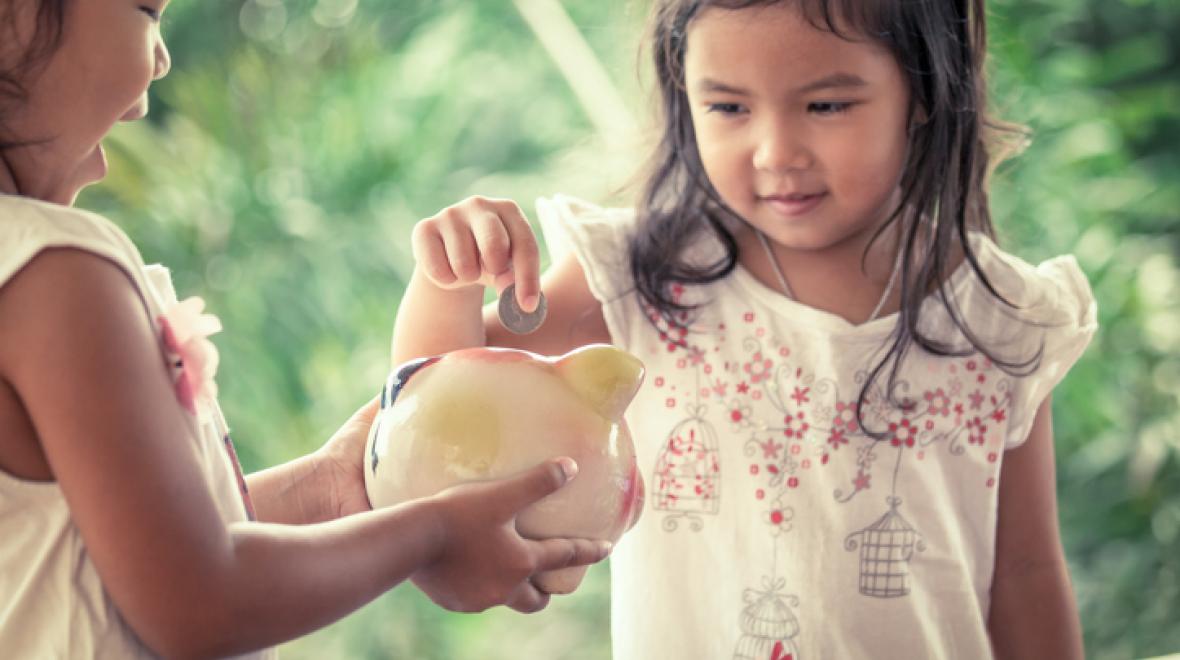
When our daughter reached kindergarten age, my husband and I started giving her an allowance. We thought it was time for her to start learning about money. Both her dad and I have had some money issues, and we wanted to teach her some skills from an early age that we didn't learn until much later — after some costly mistakes. Our child, who at that age loved to shop, bought into this idea readily.
It is pretty hard to learn about managing money if you don't have any. So in our house, the purpose of an allowance is just that — to learn about money and managing it. A valued life skill. We don't link allowance to chores, which easily distracts from the lessons of managing money. This is not to say children shouldn't contribute to the family by participating in household work — but that is another article. Allowing children to gain some money so that they can play with it and learn from it is an opportunity for them to develop financial skills that will last a lifetime.
I will detail how we structured allowance over the years (our daughter is now 16) as one method of how you might do it. As with any parenting decision, please weigh this process against your value system and replace anything that doesn't work for you with something that does.
First, a word about teaching any kind of skills. I feel strongly that we should:
- Take time for training
- Offer as much involvement for the learner as is developmentally appropriate
- Use mistakes as opportunities for learning and problem solving
- Omit threats and imposed consequences as well as artificial rewards
With those strategies in mind, we started allowance with our daughter by setting four jars before her, providing each with a purpose:
- Financial freedom: This jar’s purpose is to build "passive" income. We explained that the money put here would "never come out," but would grow for when she wanted to retire. (We later helped her transfer the money from the jar into a savings account, and later she will get to move the funds, if she wishes, into her own investments.)
- Play: She could spend money placed into this jar on whatever she wanted. This provides a sense of immediacy and freedom.
- Buy later: This jar is a short-term savings jar, which teaches the discipline, and deferred gratification, of saving funds to purchase something special.
- Give: The fourth jar is for giving to others such as charity. Contributing to a larger good is one of our family values.
We told her that 10 percent of any money she received needed to go into each of the jars and that she was free to place the remaining 60 percent into whichever jar or jars she wanted. I asked her if she thought she was old enough to do this. She said yes. And she decorated each of the jars to make them her own.
Her original allowance was $1, which we gave her in dimes (a little math lesson was a bonus). We've stuck with this method ever since, although now she is 16 and the jars have been replaced with bank accounts.
She's made a couple of mistakes, but they've provided the best lessons yet.
As she grew older, her allowance grew with her ability to be responsible with money. She spends it on things that she values; it's her money and this is how she will learn about it. It can be hard as a parent to stay out of the way through this, but important all the same. She's made a couple of mistakes, but they've provided the best lessons yet. She is now earning money in addition to her allowance. We hold her to the same standard with earned money and gift money that we do with allowance.
She gets great satisfaction donating her "give" money to her favorite charity. And she has several "buy later" jars these days — one for each thing she is saving for (including one for travel!). Several years ago she took on the responsibility of paying for her gifts to others. Her allowance went up a bit with that responsibility and she's expected to earn some money to subsidize it.
When she reached the age of 13, we added a clothing allowance. She gets a set amount of money per month to buy her own clothes and shoes. The clothing allowance is minimal — it's enough for basics, but not a lot more. If expensive and/or trendy clothes turn out to be a value of hers, she'll need to subsidize that clothing allowance to afford them.
There is one more element to the clothing allowance: If she chooses to sew and make her own clothes we reimburse her for the material and notions once the garment is complete. My mother did this for me and as a teen, it gave me the opportunity for extra cash flow. I loved it. I made quite a few of my clothes and I became a competent seamstress in the process. If I had a son, I'd make him the same deal.
As our daughter gains experience the lessons expand, and they include taking on more household responsibility in regard to the budget. Teens can plan a vacation budget (looking up airfares, hotels, estimating food costs etc.); take over the grocery budget and shopping, and even pay household bills.
Some families don't think any money should be "given," that it should all be earned. If that is the case in your family, no worries. You can still use this method by teaching them to use it with the money they earn. I suggest helping your kids find things that they like to do, things that give them joy, and brainstorm ways that they can make money at it. One of our daughter’s first paying jobs took advantage of her ability to sew — she made bags full of rice that can be heated in the microwave as heating pads and sold them to my massage clients (I'm also a licensed massage therapist).
You’ll notice here that I’ve shared the structure we use and not specific amounts. Frequently I get asked, “How much should we give for an allowance?” The answer should lie in the range of enough for them to learn with and not so much that they can buy outside of their level of responsibility. This will depend greatly on your values, income and their skill levels. As skills and responsibility grow, so can allowance.
If this sounds like something you would like to try, before you dive in, take some time by yourself or with your partner and identify what your values are around money. If your partner has different values, decide together what you want your kids to come away with. If you start by knowing this, you can design your own lessons to support it.
A version of this article originally appeared on Sahara Pirie's website. Editor’s note: This article was originally published in November 2017, and updated in January 2019.











